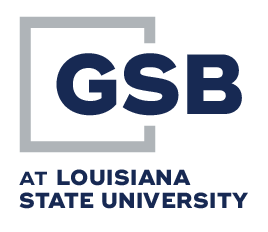Assessing a Bank’s Financial Safety and Soundness: The CAMELS Approach
In the world of banking, ensuring the safety and soundness of financial institutions is of paramount importance. Regulators play a crucial role in evaluating and rating banks’ financial conditions, operational controls, and compliance. In his class, Managing Bank Performance II, instructor Paul Allen reviewed one widely adopted method for conducting such assessments – the Uniform Financial Institutions Rating System, which utilizes the CAMELS framework. CAMELS stands for Capital, Asset Quality, Management, Earnings, Liquidity, and Sensitivity to Market Risk. This blog post explores the significance of each component and how they collectively provide a comprehensive assessment of a bank’s financial safety and soundness.
Capital (C): Capital serves as a critical source of funding for a bank’s assets. It acts as a buffer, absorbing losses and protecting depositors and creditors. Regulators evaluate a bank’s capital adequacy to determine if it has sufficient reserves to withstand potential risks and shocks. A robust capital base ensures the institution’s stability and ability to fulfill its financial obligations.
Asset Quality (A): Asset quality refers to the risk associated with a bank’s assets and the effectiveness of risk management processes. Regulators assess the level of risk or probable loss in a bank’s asset portfolio. They also evaluate the strength of risk management practices in place to control credit risk. High-quality assets and robust risk management systems are essential for a bank’s financial stability and long-term viability.
Management (M): The management component encompasses various factors necessary for the safe and sound operation of a bank. Regulators evaluate the quality and character of the individuals who guide and supervise the institution. This includes their knowledge, experience, technical expertise, leadership skills, organizational abilities, planning capabilities, and integrity. Strong and capable management ensures effective decision-making, risk mitigation, and compliance with regulations.
Earnings (E): Earnings quality reflects the composition, level, trend, and sustainability of a bank’s profits. Regulators analyze a bank’s financial performance to assess its ability to generate consistent earnings. Sustainable and healthy earnings are crucial for supporting a bank’s ongoing operations, capital growth, and shareholder value. A bank with stable and profitable earnings demonstrates its capacity to weather challenges and fulfill its obligations.
Liquidity (L): Liquidity refers to a bank’s ability to raise cash quickly and at a reasonable cost. Adequate liquidity is essential for serving customers, meeting financial obligations, and maintaining operational efficiency. Regulators evaluate a bank’s liquidity management practices and ensure it has appropriate liquidity buffers in place to address unexpected cash flow fluctuations. Sound liquidity management safeguards against potential funding disruptions and helps mitigate risks.
Sensitivity to Market Risk (S): Sensitivity to market risk assesses how changes in interest rates, foreign exchange rates, commodity prices, or equity prices can affect a bank’s earnings or economic capital. Regulators analyze a bank’s risk exposure to market fluctuations and assess its ability to manage such risks. Effective risk management frameworks, including hedging strategies and stress testing, are crucial for mitigating potential losses arising from market volatility.
The CAMELS approach provides a comprehensive framework for assessing a bank’s financial safety and soundness. Regulators consider the capital adequacy, asset quality, management effectiveness, earnings sustainability, liquidity management, and sensitivity to market risk. Evaluating these key components helps regulators form an overall picture of a bank’s financial condition. By ensuring that banks meet stringent standards in these areas, regulators contribute to a stable and secure banking system that can effectively support economic growth and protect depositors and creditors.
